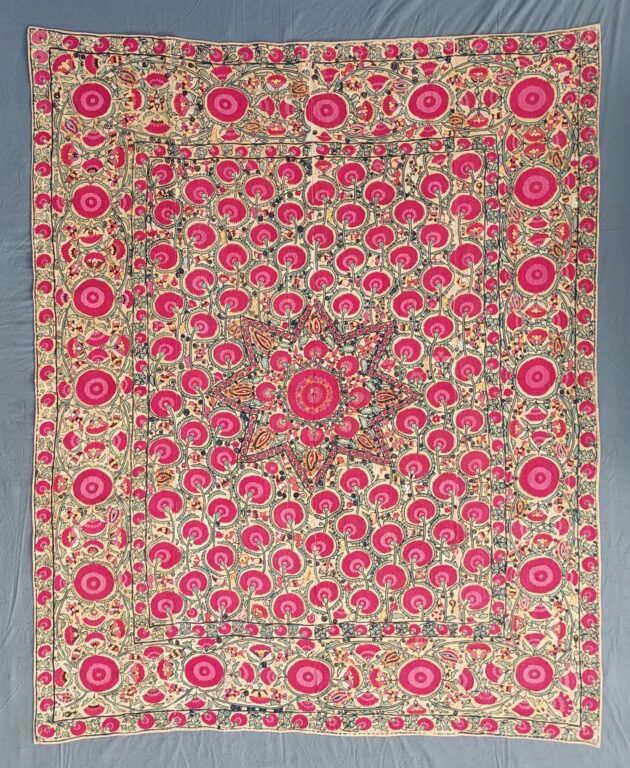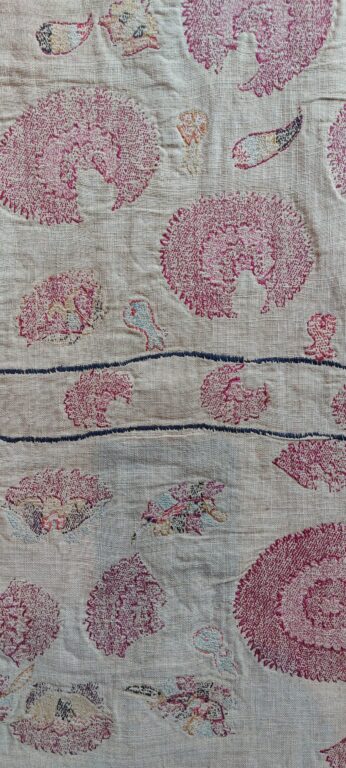Ura Tube Suzani
Description
This Ura Tube suzani dates to the earlier part of the 19th century.
The palette of predominant pinks and green and the density of the embroidery are both typical of suzanis from this region.
The embroidery is directional: the flower heads with concentric semi circles in light and darker pink and serrated edges sit on a green stem each and are surrounded by a green curved leaf. The main border, on the other hand, is non directional, with each complete round flower head connected to the next one by two arched tendrils forming oval spaces between the blossoms. These spaces are filled with four smaller flower heads in a cruciform arrangement, two pointing inwards and two pointing outwards. Two minor meandering borders flank the wide main border.
The whole piece is worked on a double canvas of hand woven cotton, the facing canvas consisting of four, fairly large panels of about 43.5 cm width, with the seams not always seamlessly over embroidered, as is typical of all suzanis. The panels on the back are narrower and coarser. Not all of the embroidery is showing on the back: all the green tendrils/ foliage and their outlines are only worked on the front canvas, which might be connected to the fact that these are embroidered in double chain stitch for the lighter green and chain stitch for the dark green outlines. The basma stitch employed in the flower heads, on the other hand, goes through to the backing. (See additional image)
An interesting and highly unusual feature in the piece in hand is the fact that whilst the embroidery is basically worked in silk, the darker orange sections are worked in very fine wool. Eleven different colours, all naturally dyed in keeping with age, can be identified: two shades of pink for the flower heads, two shades of light blue, two shades of green, a dark and a light orange, yellow, aubergine and black for the outlines, so altogether much more variety than detected at first sight.
For further discussion of the processes involved in creating a suzani, see, for example https://www.christopherleggeorientalcarpets.com/products/view/uzbek-suzani-ruijo/ on this website.
The classification of suzanis according to regional origin is often difficult and not entirely clear cut. The attribution of this piece to Ura Tube also has to come with a question mark: the central medallion of an eight-pointed flower head is not typically found on Ura Tube suzanis, which are usually characterized by an all over design. A suzani with a central eight pointed star sold at Christie’s in May 2019 for £12,500 has this attribution. But the piece in hand differs from the classic Ura Tube designs in terms of central motif as well as colour with the introduction of a considerable amount of yellow and brown. The presence of wool, too, is not typical and will need further investigation.
Undoubtedly, though, this is a wonderful textile in very good condition and with great presence.


